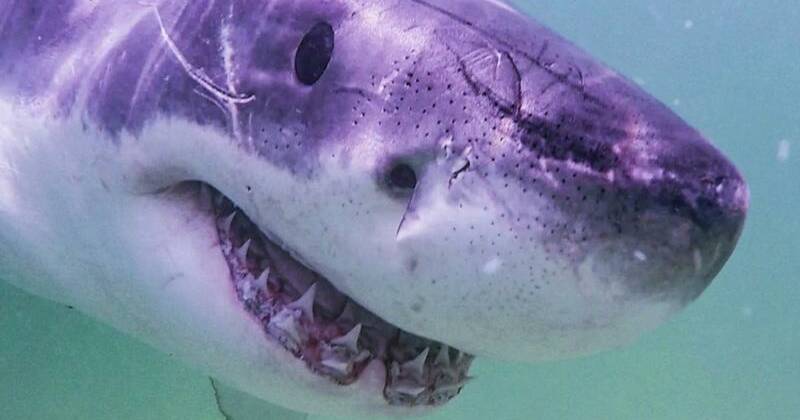Reports indicate that sightings of great white sharks are increasing significantly along the north-east coast of the United States, particularly in areas where these apex predators were once uncommon. For instance, Rick Clough, who has dedicated nearly four decades to fishing for lobsters and sea urchins off the coast of Maine, recently encountered a great white shark for the first time. The approximately 2.5-meter shark was spotted off the beach town of Scarborough in July. Clough was surprised but maintained that he does not fear the ocean, although he noted, “I’m not sure I’d want to go urchin diving now.”
As great white sharks become more prevalent, boaters, beachgoers, and fishermen in the chilly waters of New England and Atlantic Canada are adapting to their presence. The sharks, which have been popularized by the 1975 film *Jaws*, are increasingly seen in regions such as Maine, where they were rarely spotted in the past. Scientists attribute this rise in sightings to a growing seal population, a primary food source for the sharks. They emphasize that beachgoers are generally safe from shark bites, despite the sharks’ formidable size, which can reach up to 6.1 meters.
Increasing Sightings and Growing Habitats
David Lancaster, a commercial clam digger in Scarborough, utilized a drone to observe a shark measuring approximately 3.5 meters near the town’s renowned beaches earlier this month. He described the sighting as “magnificent and amazing,” but also cautioned that swimmers should remain vigilant about their surroundings.
In recent years, Cape Cod, Massachusetts, has witnessed a notable increase in great white shark sightings. The Atlantic White Shark Conservancy has recorded hundreds of these animals over the past decade. New data from Greg Skomal, a senior fisheries biologist with the Massachusetts Department of Marine Fisheries and an experienced white shark researcher, reveals that these sharks are extending their range further north into New Hampshire, Maine, and beyond.
According to a study published in May in the journal *Marine Ecology Progress Series*, the number of white sharks detected off Halifax, Nova Scotia, surged approximately 2.5 times from 2018 to 2022. The research also highlights a nearly four-fold increase in shark sightings in the Cabot Strait, which separates Nova Scotia from Newfoundland. Skomal noted that the average residency time of these sharks in northern waters has risen from 48 days to 70 days, indicating that great whites are becoming increasingly comfortable in these regions.
Rare Encounters with Humans
Despite their size and strength, dangerous encounters between great white sharks and humans remain exceedingly rare. The International Shark Attack File at the Florida Museum of Natural History reports fewer than 60 fatal great white shark bites recorded in history. This statistic underscores the relative safety for swimmers and surfers in areas where these sharks are now more frequently sighted.
As the population of great white sharks continues to grow along the north-east coast, the implications for local communities and marine ecosystems are significant. Residents and visitors alike are learning to coexist with these magnificent creatures while acknowledging the importance of safety in the waters they inhabit. The increasing presence of great whites serves as a reminder of the dynamic balance within marine environments and the need for continued research and awareness.































































